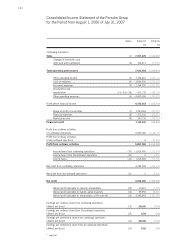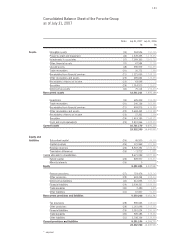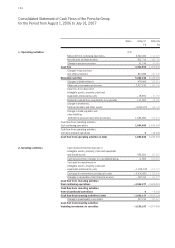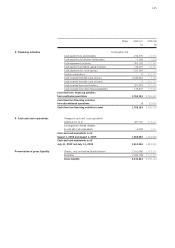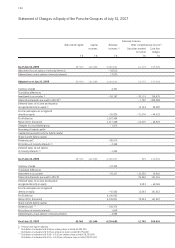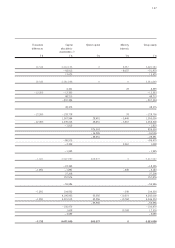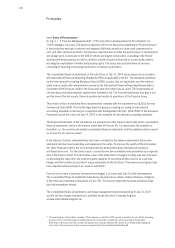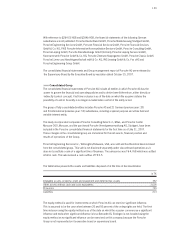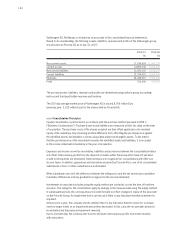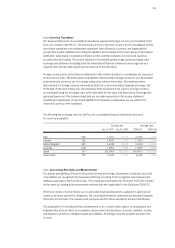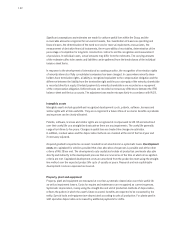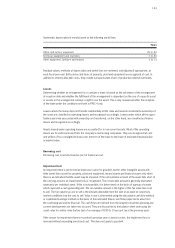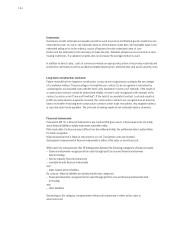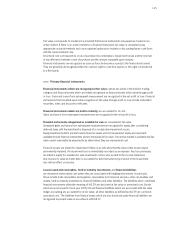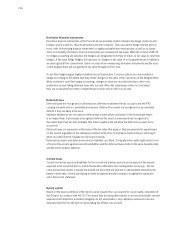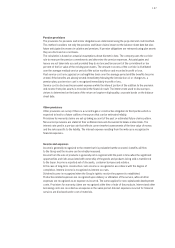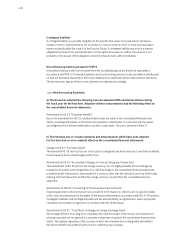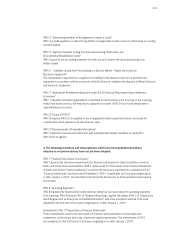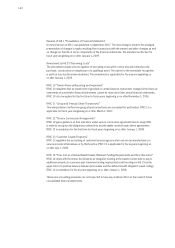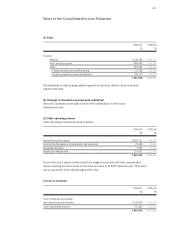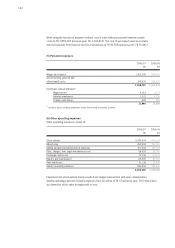Porsche 2006 Annual Report Download - page 134
Download and view the complete annual report
Please find page 134 of the 2006 Porsche annual report below. You can navigate through the pages in the report by either clicking on the pages listed below, or by using the keyword search tool below to find specific information within the annual report.132
Significant assumptions and estimates are made for uniform useful lives within the Group and the
recoverable amounts recognized for non-current assets, the classification of leases as operating and
finance leases, the determination of the need to record or reverse impairments at associates, the
measurement of derivative financial instruments, the recoverability of receivables, determination of the
percentage of completion for long-term construction contracts and the recognition and measurement
of provisions. In individual cases, actual amounts may differ from the estimates. The carrying amounts
of the estimates affects be assets and liabilities can be gathered from the break-downs of the individual
balance sheet items.
In response to the development of international accounting practice, the recognition of termination rights
of minority interests of fully consolidated companies has been changed. In cases where minority share-
holders have termination rights, a liability is recognized equivalent to the compensation obligation and the
difference between the liability from the termination right and the pro rata equity of the minority shareholder
is recorded directly in equity. Dividend payments to minority shareholders are recorded as a repayment
of the compensation obligation. Deferred taxes are recorded on temporary differences between the IFRS
balance sheet and the tax accounts. The adjustment was made retrospectively in accordance with IAS 8.
Intangible assets
Intangible assets include goodwill and recognized development costs, patents, software, licenses and
similar rights with a finite useful life. They are recognized if a future inflow of economic benefits is probable
and expenses can be clearly allocated.
Patents, software, licenses and similar rights are recognized at cost pursuant to IAS 38 and amortized
over their useful life on a straight-line basis unless there are any impairments. The useful life generally
ranges from three to five years. Changes in useful lives are treated like changes in estimates.
In addition, residual values and the depreciation methods are checked at the end of the fiscal year and
if necessary adjusted.
Acquired goodwill is reported as an asset. Goodwill is not amortized on a systematic basis. Development
costs are capitalized for vehicles provided that clear allocation of expenses is possible and all the other
criteria of IAS 38 are met. The development costs capitalized include all production overheads allocable
directly and indirectly to the development process that are incurred as of the time at which all recognition
criteria are met. Capitalized development costs are amortized from the production start using the straight-
line method over the expected product life cycle of usually six years. Research and non-capitalizable
development costs are expensed as incurred.
Property, plant and equipment
Property, plant and equipment are measured at cost less systematic depreciation over their useful life
as well as impairment losses. Costs for repairs and maintenance are recognized as current expenses.
Systematic depreciation, mainly using the straight-line and unit of production methods of depreciation,
reflects the pattern in which the asset’s future economic benefits are expected to be consumed by the
entity. Special tools and equipment are depreciated according to units of production. For plants used in
shift operation depreciation is increased by additional payments for shifts.


